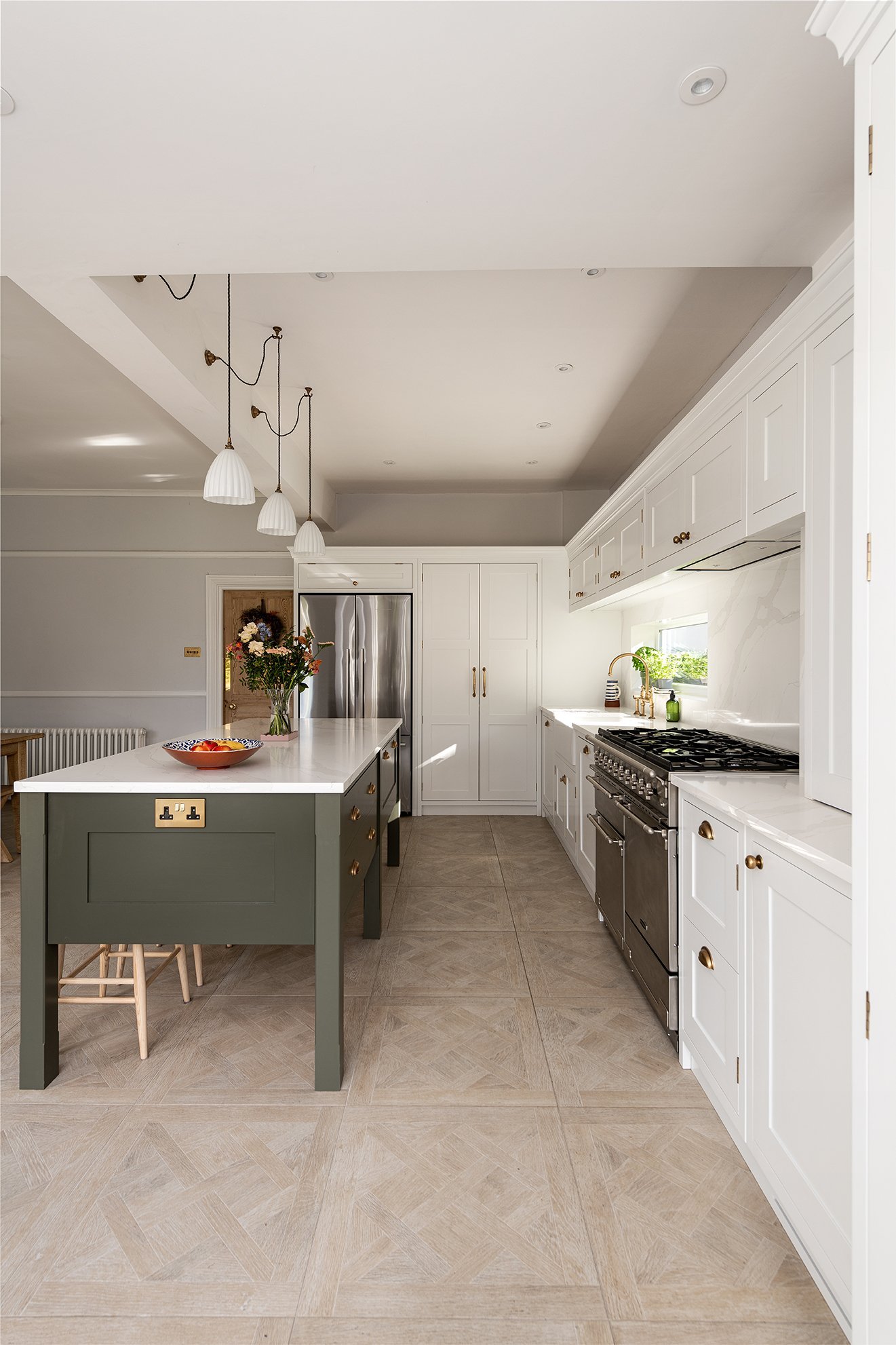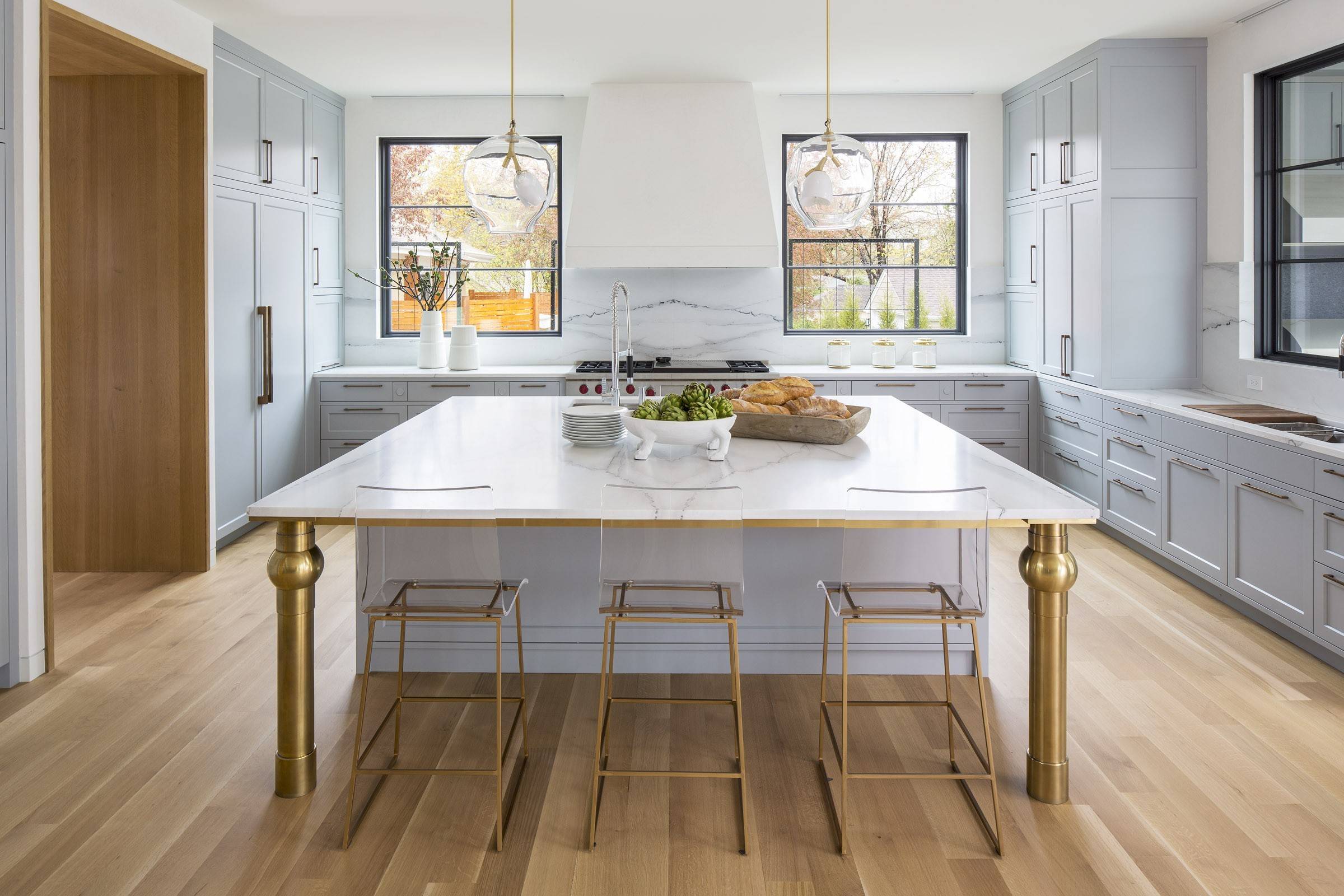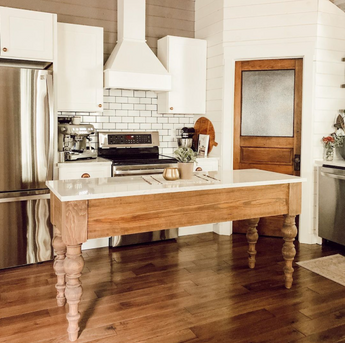Kitchen Island Legs: Improve Your Kitchen with Strong Support
Kitchen Island Legs: Improve Your Kitchen with Strong Support
Blog Article
Necessary Tips for Selecting the Perfect Table for Your Cooking Area
Choosing the ideal table for your kitchen is greater than just an issue of preference; it demands a thorough understanding of your space and needs. Begin by gauging your available space to guarantee adequate clearance for activity. The form of the table plays a pivotal role; while rectangle-shaped tables fit larger locations, rounded ones foster intimacy, and extendable options supply adaptability. Product choice is equally vital, with woods supplying toughness and glass loaning a modern touch. Ultimately, the table must harmonize with your cooking area's appearances and suit your family comfortably. What various other elements might affect this crucial decision?
Procedure Your Space
Choosing the excellent eating table begins with a precise analysis of your available space. This fundamental action ensures that the table not only fits easily within the space but also enhances the overall layout and capability of your eating area.
Take into consideration the circulation of motion around the table. It is necessary to leave ample room for chairs to be pulled out and for individuals to relocate around the table without obstruction. A general policy of thumb is to enable at least 36 inches of clearance from the side of the table to the closest wall surface or furniture. This ensures simplicity of accessibility and comfort during dishes.
Additionally, think of the number of individuals you generally entertain and whether you require additional space for visitors. Going with an extendable table can offer versatility, allowing you to fit varying varieties of restaurants. By accurately measuring your space, you prepared for selecting a dining table that enhances both the looks and capability of your dining location.
Pick the Right Forming

On the other hand, round tables are exceptional for smaller kitchen areas or intimate celebrations, as they promote discussion by allowing everybody to face each various other. They also supply a sense of comfort and can fit well in tighter areas as a result of their lack of sharp edges. Oval tables use the most effective of both globes, combining the size of rectangular tables with the intimacy of rounded ones, making them versatile for different settings.
Square tables are another choice, especially fit for square-shaped spaces. They produce a contemporary and in proportion appearance, promoting an equivalent dining experience for all seated.
Material Considerations
When choosing an eating table, material considerations are vital in figuring out the table's resilience, maintenance needs, and overall aesthetic. Timber is a classic selection, using timeless allure and effectiveness.
Glass-topped tables supply a contemporary, sleek look and can make an area show up bigger because of their transparency. However, they require frequent cleansing to stop finger prints and spots. In addition, tempered glass is recommended for its additional stamina and safety.

Lastly, composite products like MDF (Medium-Density Fiber board) or plywood are economical alternatives. These products can imitate the look of solid timber however may not offer the very same durability. They are typically easier to tidy however can be vulnerable to water damage otherwise effectively sealed.
Ultimately, the selection of product ought to align with your cooking area's design, your way of life needs, and your budget restrictions. (kitchen island legs)
Seating Ability and Comfort
How do you determine the ideal seating ability and comfort for your dining table? This critical action includes assessing both the physical room offered in your kitchen look here and your house's useful requirements. Begin by determining your kitchen area to ensure the table fits comfortably, permitting at the very least 36 inches of clearance around it for easy movement. Take into consideration the variety of individuals that normally dine together, as this will certainly affect the table dimension. For a household of four, a rectangular table of 48 inches long or a round table with a 48-inch diameter is generally adequate.
Comfort is similarly crucial. The height of the table need to ideally be around 30 inches, giving a balanced ergonomic stance for seated diners. Chairs ought to have a seat elevation of 18 to 20 inches to make certain a comfortable eating position. In addition, think about the chair layout; helpful back-rests and upholstered seats can improve eating comfort dramatically, especially throughout long term dishes.
Design and Aesthetics
Choosing an eating table that suits your style and aesthetic appeal entails stabilizing personal preference with the existing design of your eating area. The eating table is usually the centerpiece of the kitchen area, and its design must enhance the total motif of the area. Whether your cooking area flaunts a modern-day, minimal appearance or a rustic, farmhouse appeal, the table you select ought to balance with these aspects to produce a cohesive and welcoming environment.
Take into consideration materials very carefully; timber provides an ageless allure and can vary from rich mahogany for a standard aim to lighter oak for a modern feel. Metal and glass tables, on the various other hand, can introduce a sleek, industrial edge to your kitchen area. Do not forget the table's shape-- rectangle-shaped tables are classic and functional, while round and oblong options can promote an extra intimate dining experience.
Furthermore, pay very close attention to details and coatings. A troubled surface may include character and heat, whereas a glossy surface can add to a clean, modern visual. Eventually, your table ought to not just fit effortlessly into your cooking area's design however also show your personal style, boosting the space both functionally and aesthetically.
Conclusion
In verdict, selecting the ideal eating table for a kitchen necessitates mindful analysis of area, shape, product, seating capacity, and visual harmony. Making certain a minimum clearance of 36 inches promotes comfy movement, while the option of shape improves spatial dynamics. Product choice impacts resilience and style, making it vital to line up with the kitchen's general aesthetic. Ultimately, an appropriate table cultivates a welcoming ambience and accommodates the house pleasantly, therefore improving the eating experience.

When selecting an eating table, material factors to consider are paramount in establishing the table's toughness, maintenance requirements, and view overall aesthetic. For a family members of four, a rectangle-shaped table of 48 inches long or a round table with a 48-inch diameter is generally enough.
Do not overlook the table's form-- rectangular tables are traditional and versatile, while round and oblong choices can foster a more intimate eating experience. kitchen island legs.
Report this page